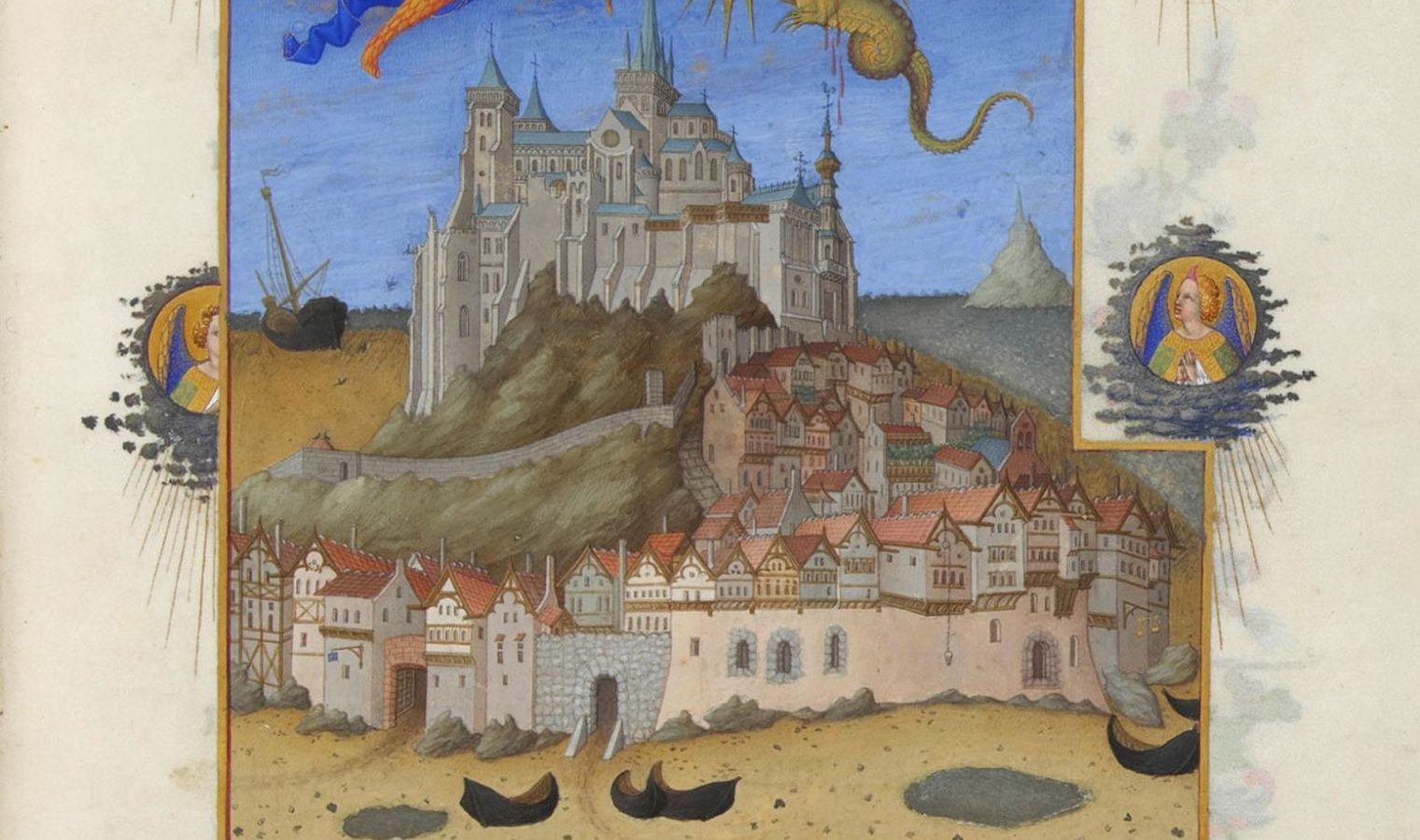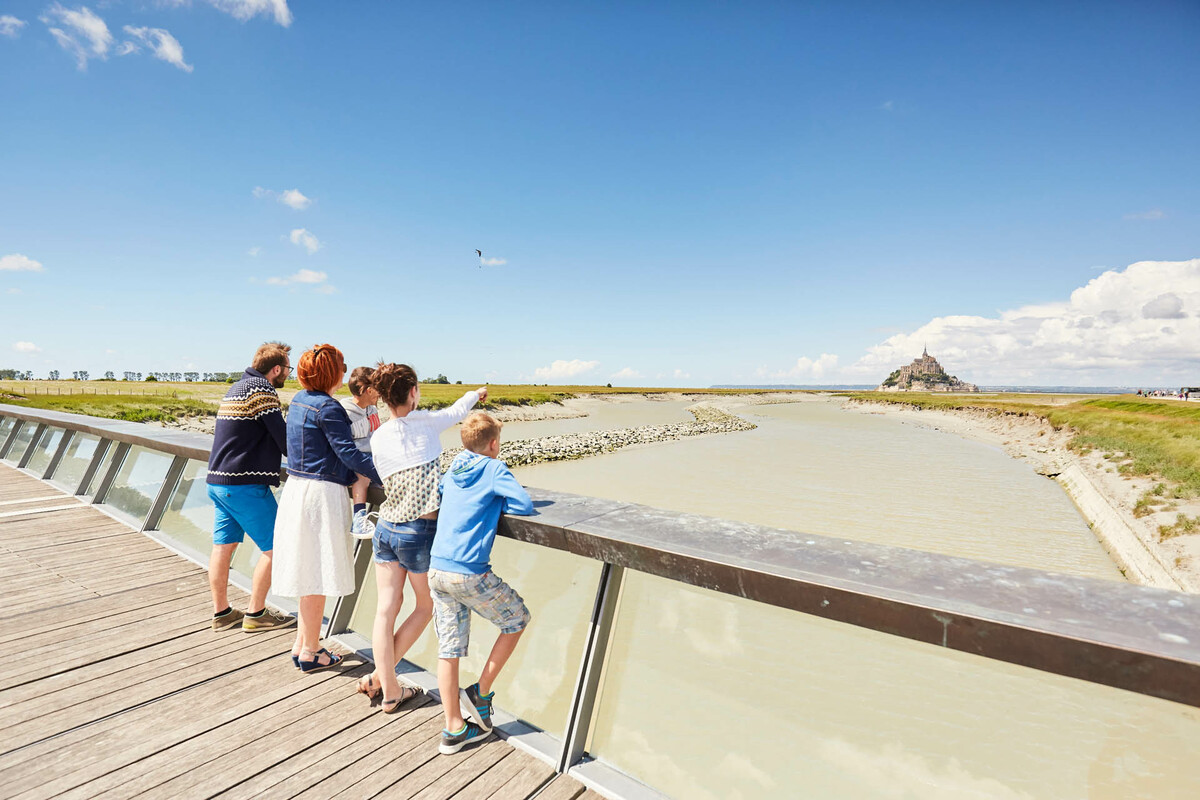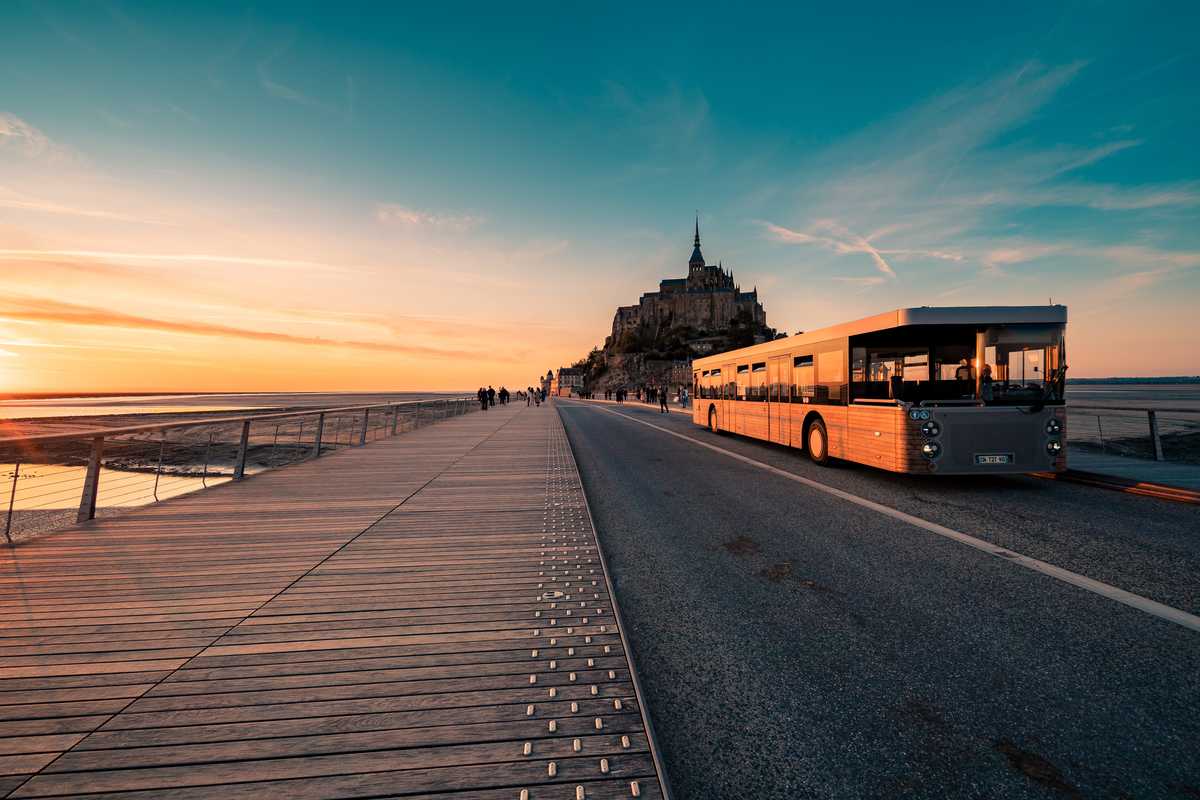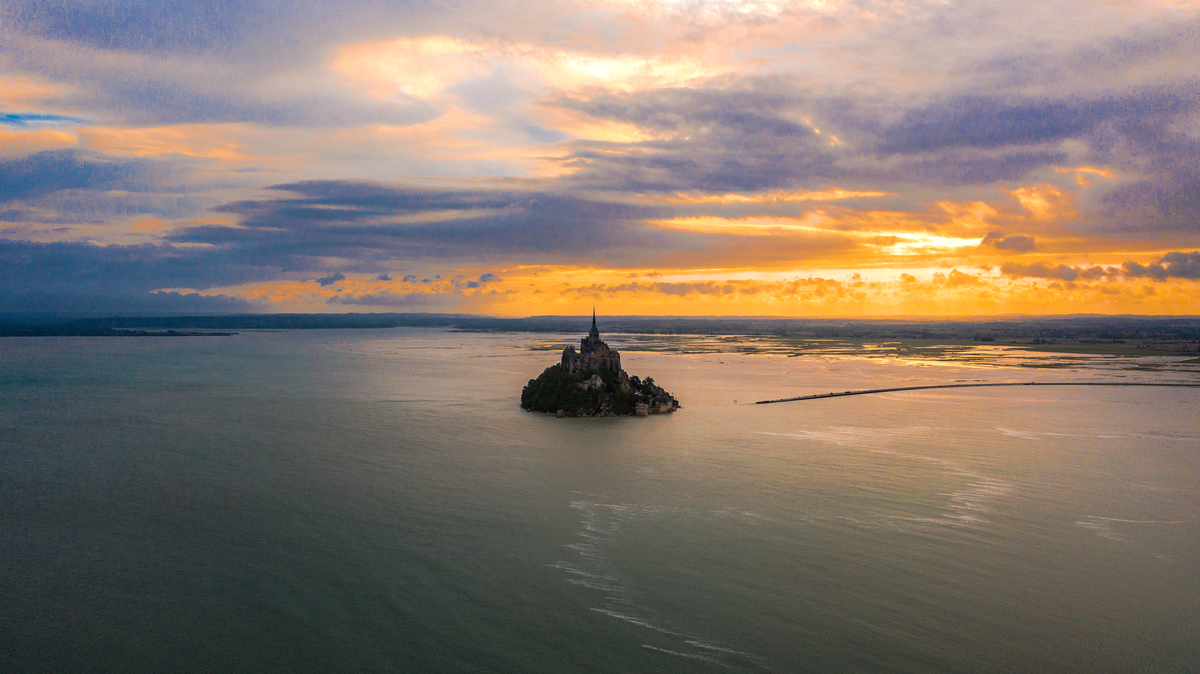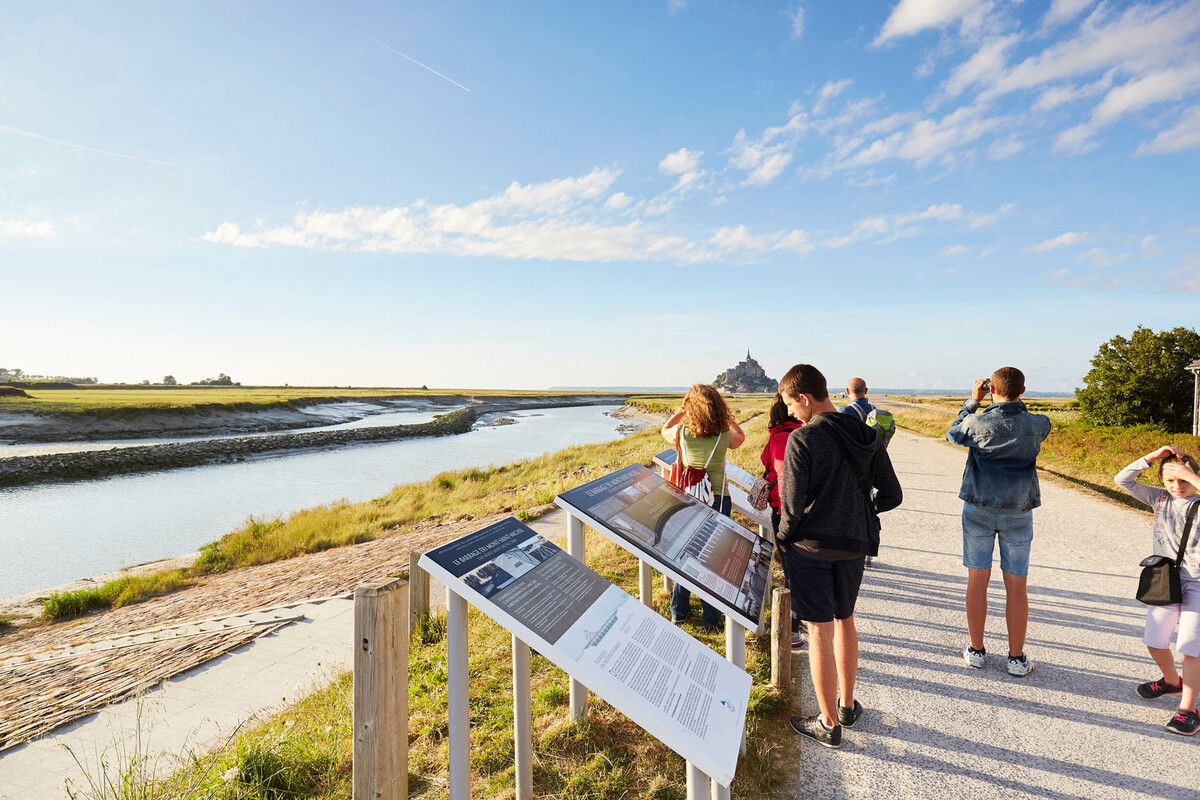For over 1,300 years, the Mont Saint-Michel’s great history has been mixed, in turn, with the personal stories of its monks, inhabitants, pilgrims and visitors.
From the Hundred Years’ War to the French Revolution, from Romanesque architecture to the latest maritime restoration works, this timeless rock takes us back through the centuries …
Origins
The granite rock of Mont Saint-Michel was originally known as Mont Tombe. In the year 708, the archangel Michael appeared in a dream-vision to Saint Aubert, bishop of Avranches, and asked him to build a sanctuary in his name. In 966, a community of Benedictines established itself and built the first church. At the same time, a village began to develop below the Mount to welcome the first pilgrims.
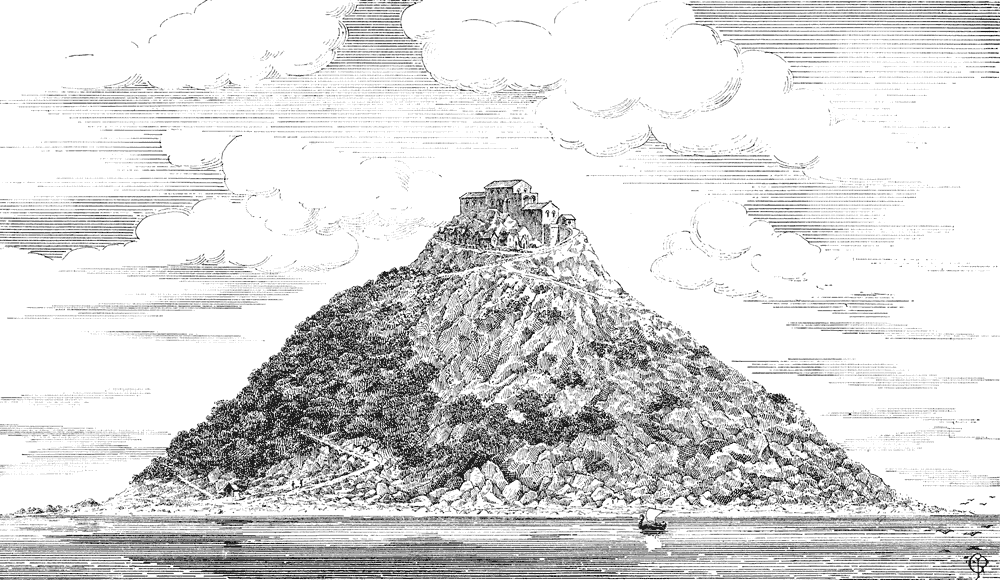
The prowess of the builders
As the number of pilgrims increased, the original church became too small to accommodate them. The 11th-century builders accomplished a real architectural feat: they built four crypts around the tip of the rock, before constructing a large abbey church on top of these. In the 13th century, a donation from the King of France, Philippe Auguste, following the conquest of Normandy, allowed the Gothic development of the Merveille to be constructed. This is formed of two three-storey buildings, crowned by the cloister and the monks’ refectory.

A fortress against the English
The Hundred Years’ War (1337-1453) made it necessary to protect Mont Saint-Michel with a series of military constructions that enabled it to withstand a siege of almost 30 years. The islet of Tombelaine, located 3 km away, which had become an English stronghold, still holds ruins from this period. During the English siege, the Romanesque choir of the abbey church collapsed. It was replaced at the end of the war by the present Flamboyant Gothic choir.
The “Bastille of the Seas”
Following the French Revolution, the monks had to abandon the abbey, which was to become a state prison. From then until 1863, 14,000 prisoners passed through this “Bastille of the Seas”, where tides and quicksand made escape impossible. The families of the prisoners then replaced the pilgrims who once frequented the alleys of the village.
Never have I felt more keenly than here the cruel antitheses that man sometimes makes with nature. ”
The Belle Époque and the rise of tourism
In 1863, following the requests of romantic writers and artists, the prison was closed. The following year, the Service des Monuments Historiques restored the building and opened it to the public. A road dike was built in 1879 to transport the growing number of tourists. The Mont Saint-Michel therefore lost its island nature, which it would only regain thanks to the recent work. Between 1901 and 1938, a steam tramway linked the town of Pontorson to the Mount. At the same time, several old and poorly maintained buildings in the village were falling into ruin. They were replaced by new buildings, constructed in the Norman and Gothic Revival styles. Between 1928 and 1938, most of these architectural pastiches were destroyed in order to restore the historical nature of the village.
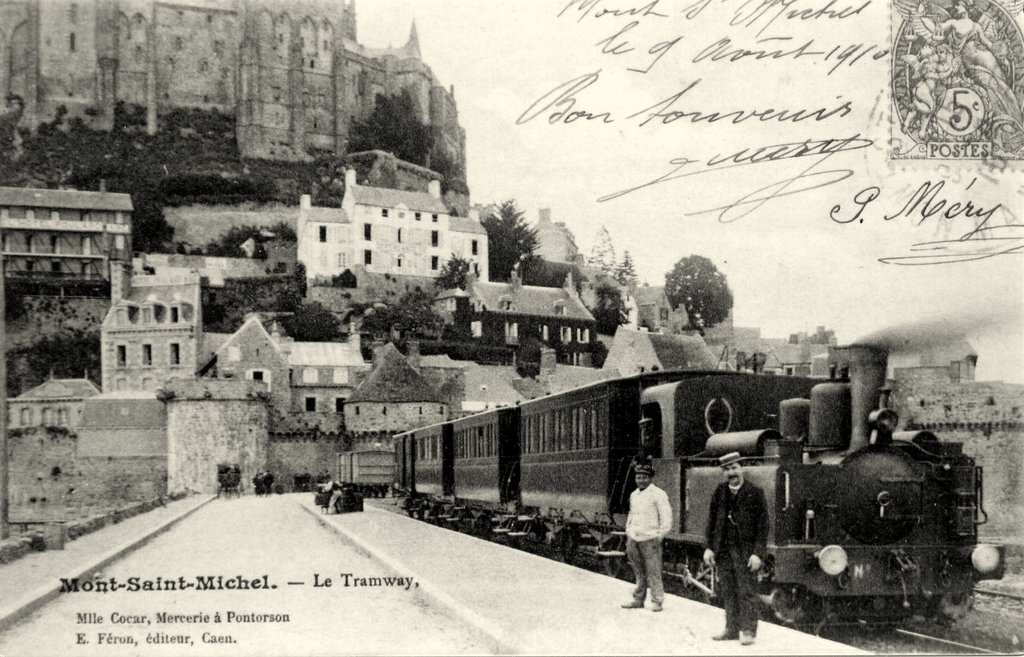
Modern times
The site was miraculously spared during the Second World War. However, it was indeed occupied by the Germans between 1940 and 1944.
1966 marked the millennium of the abbey’s foundation and the return of a religious community. The brothers and sisters of the Monastic Fraternities of Jerusalem have been providing a permanent spiritual presence since 2001, welcoming pilgrims and visitors from all over the world.
In 1979, UNESCO added Mont Saint-Michel and its bay to its list of World Heritage sites.
Between 2006 and 2015, a unique construction site made it possible to reinvent access to the site, in order to manage the progressive silting up of the bay and preserve the islands nature of Mont Saint-Michel. Car parks have been redeveloped on the mainland, while the old road dyke has been destroyed in favour of a walkway bridge, and a dam has been built on the Couesnon to repel sediment.
Mont-Saint-Michel has made international friendships with the island of Miyajima (a commune in Hatsukaichi, Japan) in 2009, and the commune of Monte Sant’Angelo (in Italy) in 2019.


